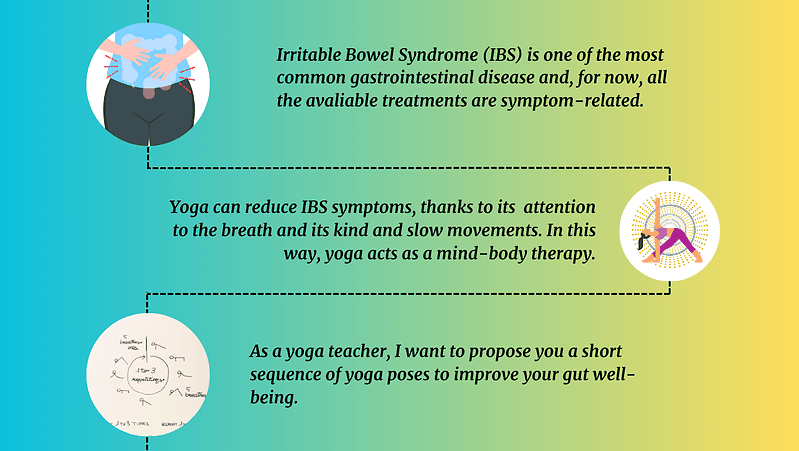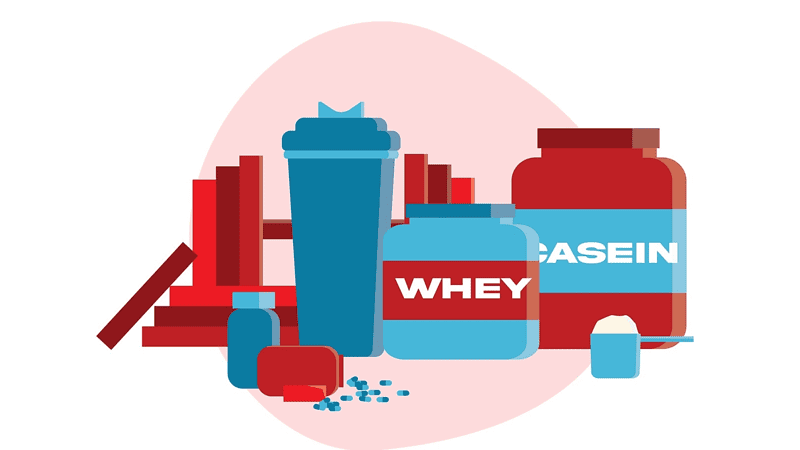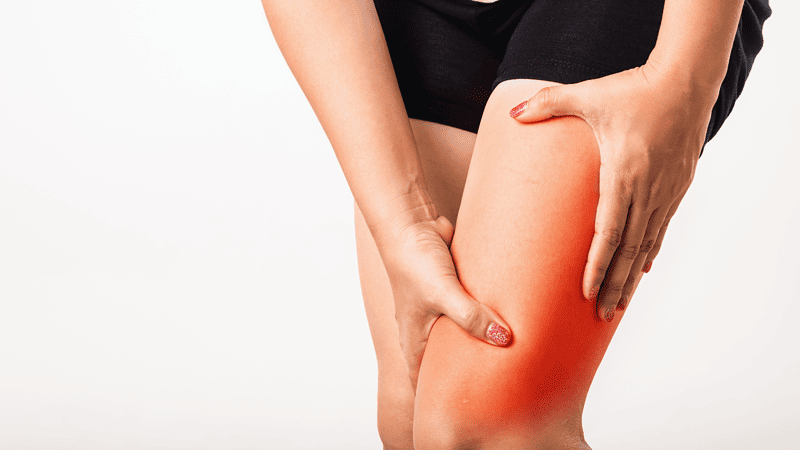
Five Yoga Poses to Sooth and Improve
Irritable Bowel Syndrome
Relieve IBS Symptoms with Yoga - By Kristen Fincham
Reading time: 4 minutes
If you're grappling with Irritable Bowel Syndrome (IBS), you know how disruptive and uncomfortable those symptoms can be. Bloating, cramps, and unpredictable bathroom visits are no one's idea of a good time. While dietary changes and supplements can certainly help, there’s another tool you might not have considered: yoga. Yoga isn't just for flexibility and mindfulness; it can also play a significant role in alleviating IBS symptoms. So, let’s roll out the mat and dive into five yoga poses that can help soothe your digestive system.
1. Child’s Pose (Balasana)
Let’s start with a classic – Child’s Pose. This gentle, restorative pose is perfect for when your stomach feels like it’s hosting a boxing match.
How to Do It:
- Kneel on your mat with your big toes touching and knees spread apart.
- Sit back on your heels.
- Extend your arms forward and lower your torso between your thighs.
- Rest your forehead on the mat and breathe deeply.
Why It Helps: Child’s Pose gently compresses the abdomen, which can help to release trapped gas and stimulate the digestive organs. Plus, it's incredibly relaxing, which is great for reducing stress – a notorious IBS trigger. Think of it as giving your gut a gentle hug.
2. Wind-Relieving Pose (Pawanmuktasana)
The name says it all! This pose is specifically designed to help release gas and relieve bloating.
How to Do It:
- Lie on your back with your legs extended.
- Draw your right knee to your chest, keeping your left leg straight.
- Hold your knee with both hands and gently press it into your abdomen.
- Hold for 20-30 seconds, then switch legs.
- For added effect, try drawing both knees to your chest simultaneously.
Why It Helps: This pose puts direct pressure on your abdomen, helping to expel gas from the intestines and reduce bloating. It’s like pressing the release valve on your gut – instant relief!
3. Seated Forward Bend (Paschimottanasana)
This pose might be a bit more challenging, but it’s fantastic for massaging the abdominal organs and improving digestion.
How to Do It:
- Sit on the floor with your legs extended straight in front of you.
- Inhale, lengthen your spine, and reach your arms above your head.
- Exhale, hinge at the hips, and reach for your toes.
- Hold your feet, ankles, or shins, depending on your flexibility.
- Stay in the pose for several deep breaths.
Why It Helps: Seated Forward Bend compresses the abdomen and stimulates the digestive tract, promoting better digestion and alleviating constipation. Plus, it stretches the entire back of your body, helping to relieve tension and stress. It’s a two-for-one deal – improved digestion and a calm mind.
4. Cat-Cow Pose (Marjaryasana-Bitilasana)
This dynamic duo of poses helps to get your digestive juices flowing and reduces stress on the abdomen.
How to Do It:
- Start on your hands and knees in a tabletop position.
- Inhale, drop your belly, lift your head and tailbone towards the ceiling (Cow Pose).
- Exhale, round your spine towards the ceiling, tuck your chin, and draw your belly to your spine (Cat Pose).
- Continue flowing between Cat and Cow for 1-2 minutes.
Why It Helps: Cat-Cow Pose massages and stimulates the abdominal organs, promoting digestion and reducing bloating. It also helps to relieve tension in the back and abdomen, making it a great pose for overall relaxation.
5. Supine Twist (Supta Matsyendrasana)
Twists are excellent for wringing out toxins and stimulating digestion. This pose is a gentle way to give your digestive system a boost.
How to Do It:
- Lie on your back with your knees bent and feet flat on the floor.
- Extend your arms out to the sides in a T-shape.
- Drop your knees to the right while keeping your shoulders on the floor.
- Hold for several breaths, then switch sides.
Why It Helps: Supine Twist stimulates the digestive organs, improves circulation, and helps to relieve bloating and constipation. The gentle twisting motion massages the intestines and helps to move things along.
Incorporating Yoga into Your Routine
Now that you have these five poses in your arsenal, how do you incorporate them into your daily routine? Here are a few tips:
- Consistency is Key: Aim to practice these poses daily, especially when your IBS symptoms are flaring up. Consistent practice can lead to more sustained relief.
- Listen to Your Body: Yoga should never be painful. If a pose feels uncomfortable, ease off or try a modified version.
- Combine with Other Therapies: Yoga is a fantastic complement to dietary changes, stress management techniques, and a supplement routine geared toward IBS.
- Stay Hydrated: Drink plenty of water before and after your practice to help keep your digestive system hydrated and functioning optimally.
- Mindful Breathing: Focus on deep, mindful breathing throughout your practice. This not only enhances the physical benefits of the poses but also helps to reduce stress and anxiety, a major factor in IBS.
Final Thoughts
Living with IBS can be challenging, but incorporating specific yoga poses into your routine can offer significant relief. These poses help to stimulate digestion, reduce bloating, and alleviate stress – all essential for managing IBS symptoms. So, unroll your mat, take a deep breath, and give these poses a try. Your gut will thank you!





